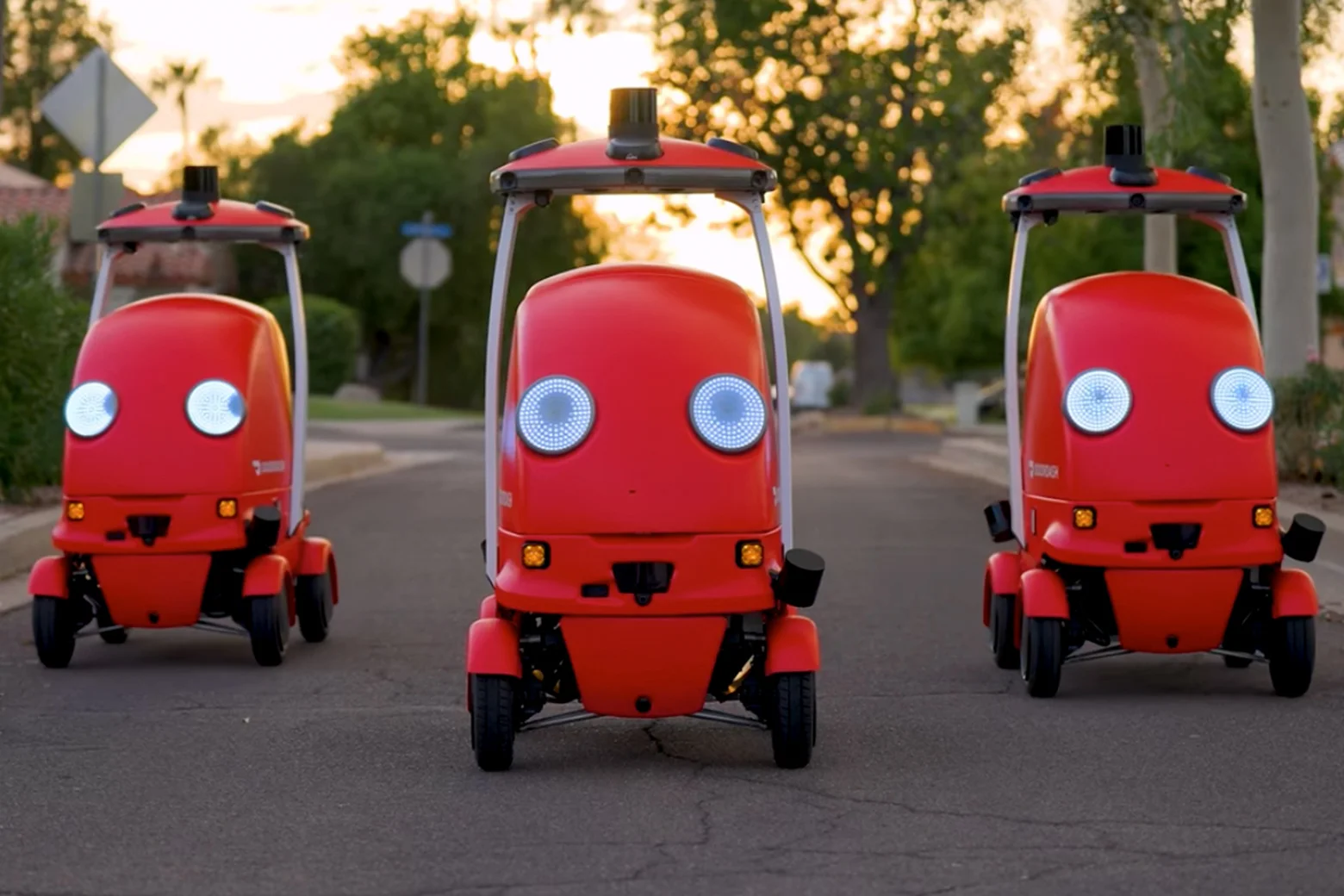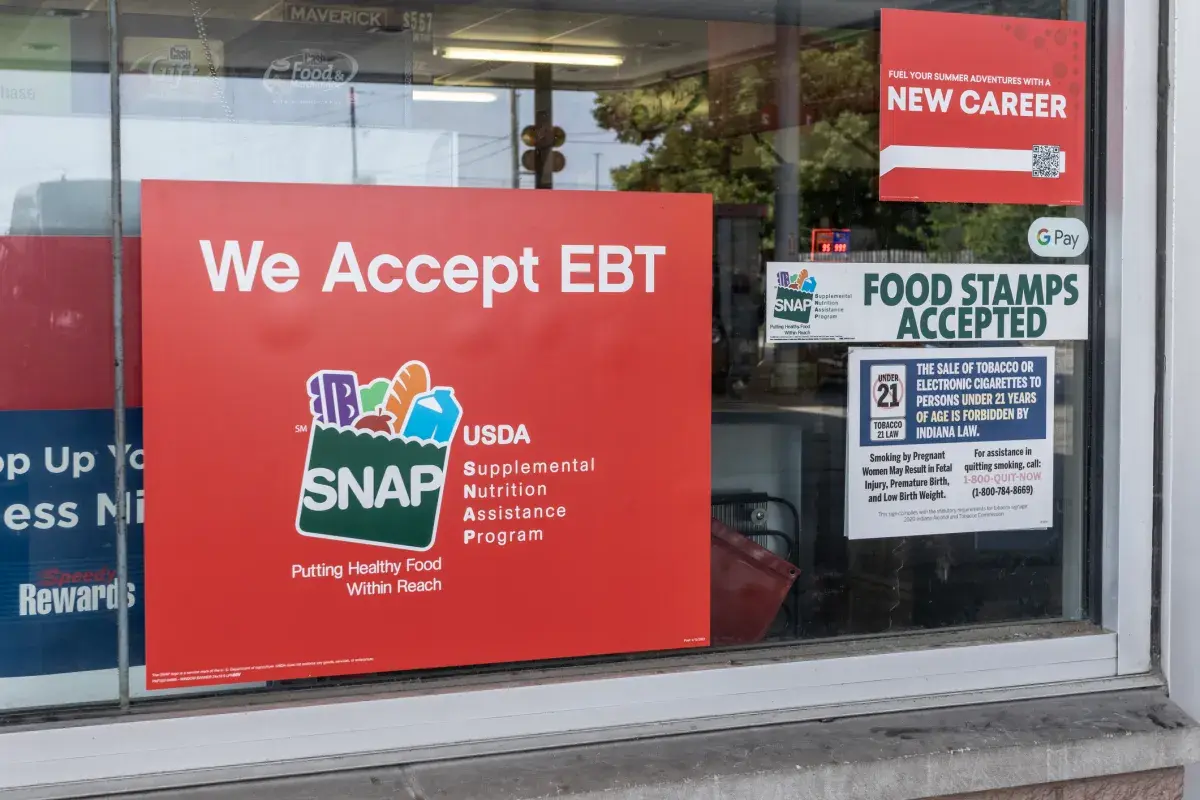Copyright Slate

Sign up for the Slatest to get the most insightful analysis, criticism, and advice out there, delivered to your inbox daily. Throughout 2025, via political donations and not-so-subtle business moves, DoorDash has been showing the millions of gig workers who make its multibillion-dollar business viable that it’s willing to spend far more to undermine their rights than to compensate them fairly—and it may soon replace them entirely with driverless vehicles. Last week, the United States’ largest food-delivery platform announced it was kickstarting a partnership with the autonomous vehicle brand Waymo—a subsidiary of Google’s parent company, Alphabet, that’s come closer than any other Silicon Valley firm to realizing the longtime tech dream of the safe self-driving automobile. Phoenix, one of the five cities where Waymo actually operates, will be the urban laboratory for home deliveries of food, groceries, and other goods from participating retailers via driverless car. In Los Angeles and San Francisco, two of the other metropolises that have welcomed Waymo, subscribers to the $10-a-month DashPass can earn a $10 discount off one Waymo ride every month. L.A. shoppers can also get “last-10-feet” front-yard service thanks to DoorDash’s new alliance with Serve Robotics, best known as the startup behind all those boxy, four-wheeled delivery bots that have appeared on John Mulaney’s talk show, collided with disabled Californians, and been attacked by displeased hooligans for TikTok #content. DoorDash is wasting no time bringing more of its customers up close to a self-propelled, tip-free delivery economy—and reconfiguring the system so more money ends up in their corporate coffers than in any human clients’ pockets. (It’s not for nothing that the Waymo-Phoenix experiment will initially service DoorDash’s own store, DashMart, and its self-branded network of inventory houses.) Earlier this month, OpenAI announced that ChatGPT will soon integrate DoorDash’s digital functions within the generative-text bot itself, allowing users to place orders without having to abandon their virtual partner for even a minute. Late last month, DoorDash rolled out its own delivery-robot model, Dot, in the streets of metro Phoenix as a test for a “hybrid” structure: Human “Dashers” cart orders over the long haul, then hand those wares to Dot so it can wheel up to your front porch, its heart-eyes aglow. That’s all on top of DoorDash’s springtime expansion of a sidewalk-robot delivery fleet manufactured by Coco Robotics, its summertime plans to invest further into A.I.-powered ad tech, and its barely year-old drone delivery program in the Dallas–Fort Worth region. The straightforward conclusion is that DoorDash and its investors are ready to automate every function of this newly profitable, still-independent tech juggernaut that’s grown large enough to swallow up international platforms like the British delivery outfit Deliveroo—even if the side effect is A.I.-generated food images. (The publicly traded company’s stock value has grown by nearly 60 percent throughout the year.) But to understand why the strategy is to get to wholesale human replacement instead of merely supplementing Dasher labor, look to the other realm where DoorDash has been speaking with its profits. There’s been no shortage of national chatter around New York City’s mayoral race. But even before the pro-labor, anti-gig-economy Zohran Mamdani leapt to broader fame, DoorDash had helped push election expenditures in the city’s primaries to record levels, in order to stop him and other like-minded politicos. First, in May, the company donated $1 million to Fix the City, a political action committee formed to support former Gov. Andrew Cuomo’s political return. Committing a $5 million chest to NYC’s Democratic Party primaries and forming its own super PAC (called Local Economies Forward), DoorDash also shoveled cash into various City Council races and tried to boost the council speaker’s laggard challenge to Cuomo and Mamdani. All the while, it’s deployed a beefed-up lobbying army to City Hall in opposition to the labor rights won on behalf of New York’s deliverers, rideshare drivers, and other gig workers—as well as the added protections and guarantees being considered for passage. (Right now, DoorDash and other tech-economy giants like Uber are yelping at the Council over a pending bill that demands a just-cause process before locking a worker out of their account; after Seattle passed a similar bill in July, DoorDash geofenced a “Seattle fee” surcharge that bled out into the surrounding towns.) The years since the pandemic fueled a major political shift in the perception of gig workers, especially those in large cities like New York. While tens of thousands delivery workers (many of them immigrants) kept working outside amid a public health shutdown and got hailed as essential workers, the NYC Council became more attuned to these deliverers’ concerns, whether they worked for DoorDash, Uber Eats, Instacart, or some other booming gig market. (Delivery robots also gained more attention around this time, though they were hardly up to the task.) Through a series of high-profile protests and rallies, deliverers informed customers that they were getting stiffed on pay, and they did not have durable insurance to cover accidents, robberies, injuries, and physical attacks. From 2021 onward, New York lawmakers began passing bills that required gig-delivery apps to stop hitting their drivers with surprise fees and make their tipping policies more transparent, while mandating third-party client restaurants to allow these workers bathroom access. In 2023, the City Council set a new, higher minimum wage for restaurant delivery workers, the first of its kind in the entire country; because the law left out grocery-delivery apps in a misstep that became known as the “Instacart loophole,” council members have now been working to extend that basic compensation to those left out of the first round. (It didn’t hurt the cause that Instacart executives were caught on tape explicitly bragging about hoarding profits by “squeezing” deliverers, usually by “batching” separate orders in bulk in order to tamp down compensation opportunities.) So, as these protections took effect in New York and spread to other areas like Seattle and Massachusetts, the likes of Uber, DoorDash, and Instacart attempted to strike back by forming and funding new lobbying groups and PACs, which produced ads that made it seem like not giving their workers basic rights would preserve their “flexibility,” benefiting them and their local economies. Having successfully denied deliverers employee-level benefits in California by promoting a 2020 “independent contractor” ballot initiative, these gig apps have been replicating the approach elsewhere, to much less success. (New York City Mayor Eric Adams vetoed a recent spate of gig-work legislation that was publicly opposed by DoorDash, but the council overrode him.) Most stinging of all for DoorDash is that, even outside of the laws, they’ve had to spend more on their New York workers. In February, it settled a tip-theft lawsuit from New York state Attorney General Letitia James (incidentally, the woman who investigated Cuomo out of the governor’s mansion) by compensating Dashers a cumulative $17 million. Last year, DoorDash had to settle another case from James that alleged discrimination against deliverer applicants with criminal histories, forcing the company to review bids from thousands of rejected wannabe-Dashers and to pay them a total of $75,000. These settlements were not very remunerative for the people affected by DoorDash’s practices; the 2024 agreement paid out just an average of $25 per rejected applicant. But the message from DoorDash’s spirited lobbying is that even these tiny sums are too costly as expenses for human capital. (Its partnership with the Swedish buy-now-pay-later platform Klarna makes for even worse optics, considering the latter’s CEO has frequently boasted about slashing thousands of positions thanks to A.I.) The platform doesn’t appear to be too concerned with how much its Dashers earn, and when. So when your lobbying efforts fail and you have to give your workers more thanks to new laws and court settlements, what do you try next? You tighten the squeeze, mostly by adding all sorts of extra fees for consumers, under the specious claim that it’s actually going to drivers. Despite the messaging that better pay for workers makes everything more expensive, fewer people are falling for the talking point. Members of Congress have probed DoorDash over alleged “junk fees” and price gouging, and disaffected customers have filed Federal Trade Commission complaints along with class-action suits. In Illinois, one state lawmaker has proposed a regionwide “tax” on DoorDash and Uber deliveries that would help fund a beleaguered public transit system. So it’s little wonder that DoorDash, at a moment when its anti-worker crusades have had little return, is looking to autonomous vehicles, whether those are slick self-driving cars or meme-ready boxy cartons, in order to ramp up the human squeeze. It’s just following in the vein of fellow tech giants like Amazon, which is hoping to discard all the union drives and complaints from warehouse staffers, gig drivers, and fulfillment-center franchisees by automating up to 75 percent of its operations, according to internal documents obtained by the New York Times. That may not go as well as DoorDash may think, however. Despite Waymo’s undeniable success, it’s also facing a Trump administration probe over the failure of its cars to safely and properly handle the presence of the school buses with which it shares the road; reluctance from other big cities to fully embrace Waymo and Serve Robotics just yet; and the so far persistent costliness of human-free Waymo vehicles compared with long-standing rideshare companies, which have also become more expensive in recent years. (There’s also the issue of what happens when a Waymo car collides with a Saymo bot in a city that’s taken in both.) DoorDash hopes that bots won’t ask for the rights and wages now afforded to many urban delivery workers, but it may not be able to beat the simple human urge for real-life connection, even if it’s mediated through an app.



